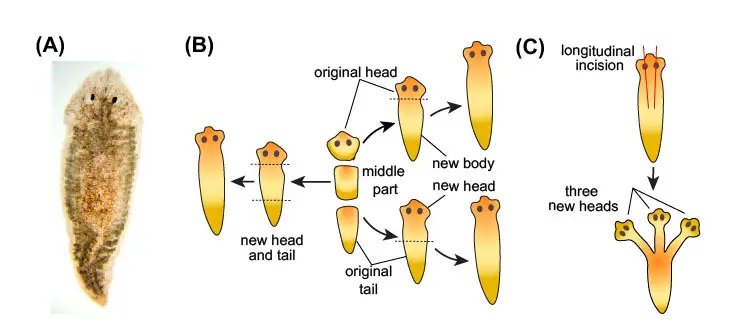
Imagine you’re peering into a pond with a magnifying glass. In this tiny universe, Planaria interacts with various other microfauna, like microscopic crustaceans, bacteria, and protozoans. These interactions can be compared to a bustling city where each organism has its own job and purpose. Let’s dive deeper into how Planaria relates to its tiny neighbors and why these connections are vital to environmental health.
What is Planaria?
Planaria are remarkable little creatures belonging to the phylum Platyhelminthes. You might find them lurking in freshwater ponds, marshes, and sometimes even damp soil. They’re known for their flattened bodies and streamlined shape, which helps them swim effortlessly. Planaria come in various colors, from earthy browns to vibrant reds and greens, adding a splash of color to their environments.
One of the coolest things about Planaria is their ability to regenerate. If they lose a part of their body, they can regrow it, almost like a superhero! This incredible adaptation allows them to survive in challenging habitats, making them resilient players in their ecosystems.
These flatworms are also carnivorous. They feed on small organisms like bacteria, rotifers, and even tiny crustaceans, forming an essential part of the food web.
The Role of Planaria in the Ecosystem
Planaria play a crucial role in their ecosystems as both predators and prey. By feeding on bacteria and microfauna, they help control these populations, preventing any one group from overwhelming the environment. Think of them as a check-and-balance system that keeps the ecosystem healthy.
In turn, Planaria are an essential food source for larger organisms, like fish and amphibians. When these predators eat Planaria, they help sustain the larger food web. This relationship highlights how interconnected life is in a pond. If Planaria were to disappear, it would create a ripple effect, impacting many species, including those who feed on them.
Additionally, Planaria can affect nutrient cycling. By consuming organic matter and microorganisms, they release nutrients back into the ecosystem, promoting plant growth and supporting other organisms. Without this recycling process, many aquatic environments would struggle to thrive.
Interactions with Other Microfauna
Planaria interact with a variety of microfauna in their habitats. These include bacteria, protozoans, rotifers, and tiny crustaceans like daphnia. Each of these organisms has its own role, creating a complex web of interactions.
For instance, bacteria serve as a vital food source for Planaria and other microfauna. As Planaria consume bacteria, they help regulate bacterial populations, maintaining a balance in the ecosystem. Without Planaria, bacterial blooms could become problematic, leading to reduced water quality and oxygen levels.
Then we have protozoans, which are single-celled organisms that often share a habitat with Planaria. These creatures can compete with Planaria for food. However, they also serve as a food source, creating a dynamic feeding relationship. It’s a bit like having roommates—you might sometimes clash over shared resources but can also benefit from living together.
Rotifers are another group of microfauna that coexist with Planaria. These tiny creatures can have varying diets, sometimes consuming bacteria or algae. Planaria feed on rotifers, creating a predator-prey dynamic that helps control rotifer populations. This interaction showcases how different species can influence each other’s survival and abundance.
The Importance of Biodiversity
You might be wondering why all these interactions matter. Biodiversity, or the variety of life in a given area, is crucial for ecosystem stability. In an ecosystem with diverse microfauna, like the one Planaria inhabit, relationships are more resilient to changes. If one species declines, others can fill in the gaps, helping to maintain balance.
When biodiversity is low, ecosystems can become fragile. For instance, if a disease affects a specific microfauna species, it can significantly disrupt the entire system. Planaria contribute to this biodiversity, helping to create a rich tapestry of life that can withstand environmental shifts and stresses.
Furthermore, healthy ecosystems provide essential services to us, including clean water, nutrient cycling, and even the regulation of disease. So, when we protect organisms like Planaria and their interactions with microfauna, we’re not just looking out for tiny worms—we’re supporting the broader health of our environment.
Planaria and Environmental Indicators
Planaria can also serve as indicators of environmental health. Due to their sensitivity to changes in water quality, scientists often study their populations to assess the overall state of aquatic habitats. For example, a sudden decline in Planaria might signal pollution or habitat degradation.
Monitoring these organisms allows researchers to detect issues early, preventing more significant environmental problems down the line. It’s similar to having a canary in a coal mine; if the canary falls ill, miners know there’s something wrong before it’s too late.
Thus, understanding how Planaria interacts with other microfauna not only gives us insight into their role in ecosystems but also provides valuable information about environmental conditions.
Planaria may seem like small, insignificant creatures in the grand scheme of nature, but their interactions with other microfauna highlight the complexity and beauty of ecosystems. They play vital roles as both predators and prey, helping maintain balance, nutrient cycling, and biodiversity.
Understanding these relationships is essential as we face increasing environmental challenges. By appreciating the tiny creatures like Planaria and their roles in our ecosystems, we can better advocate for conservation efforts that protect our water bodies and their diverse inhabitants. After all, every organism counts when it comes to sustaining the intricate web of life on our planet.
